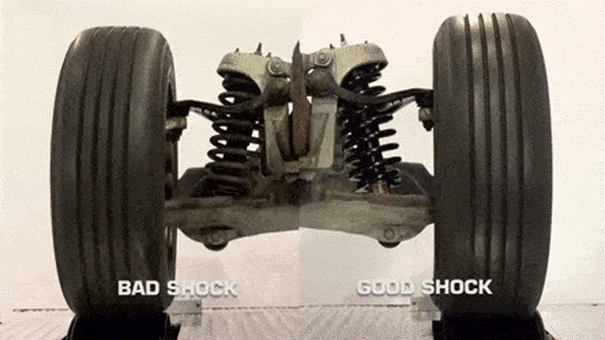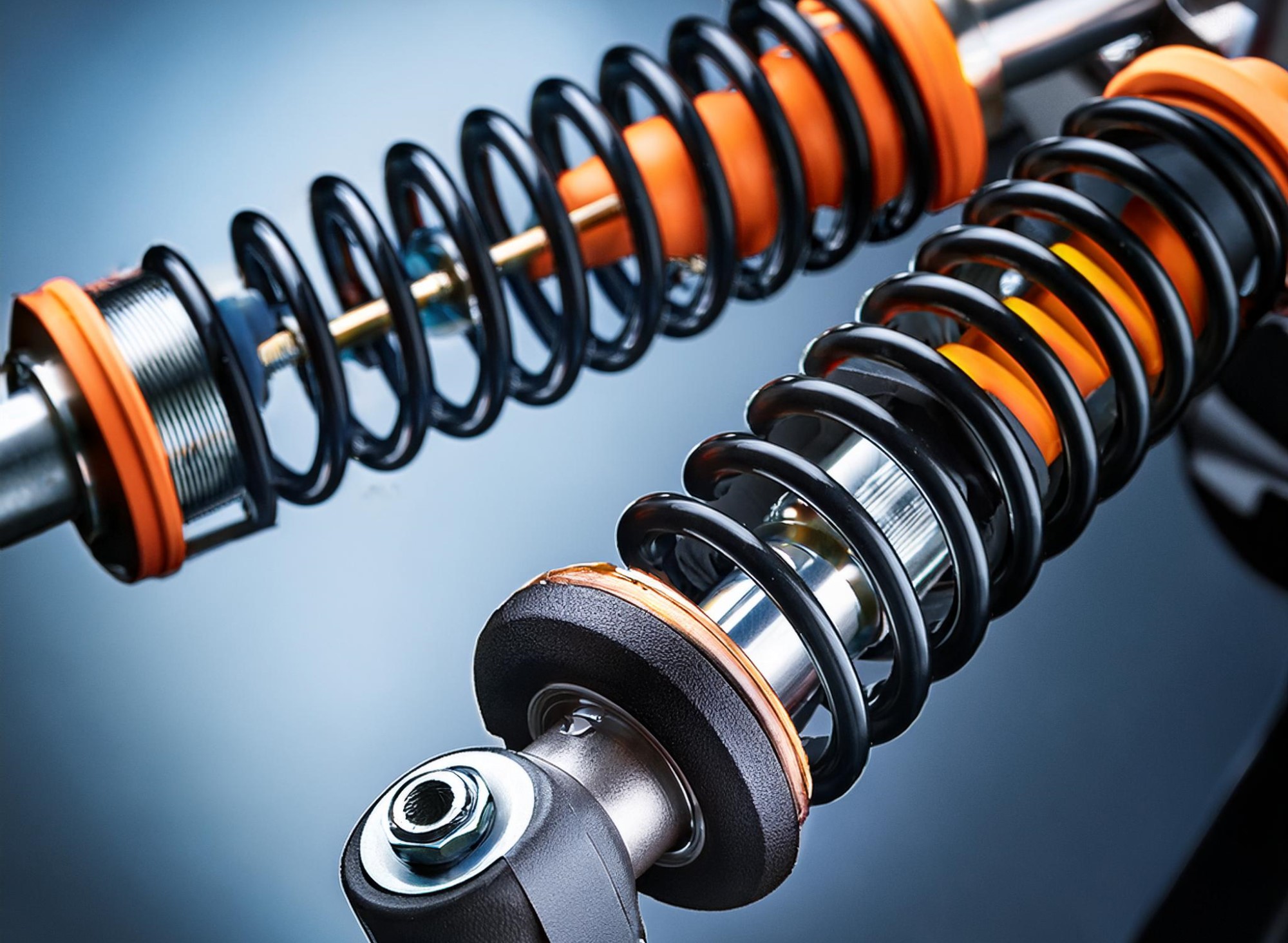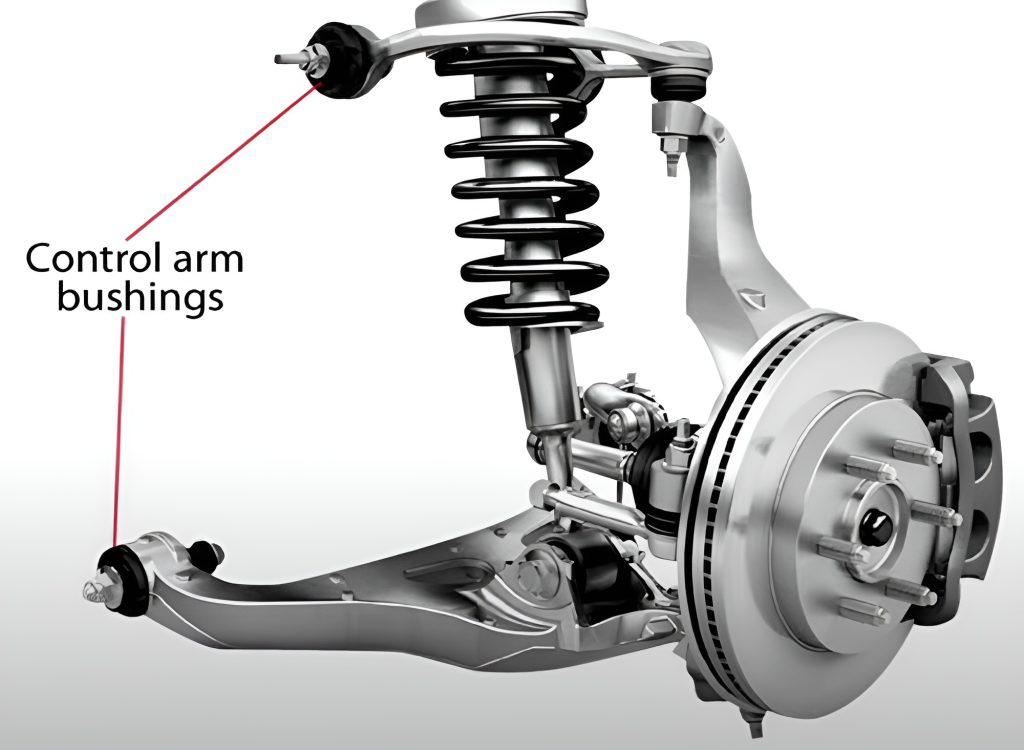What is the Working Principle of a Shock Absorber?
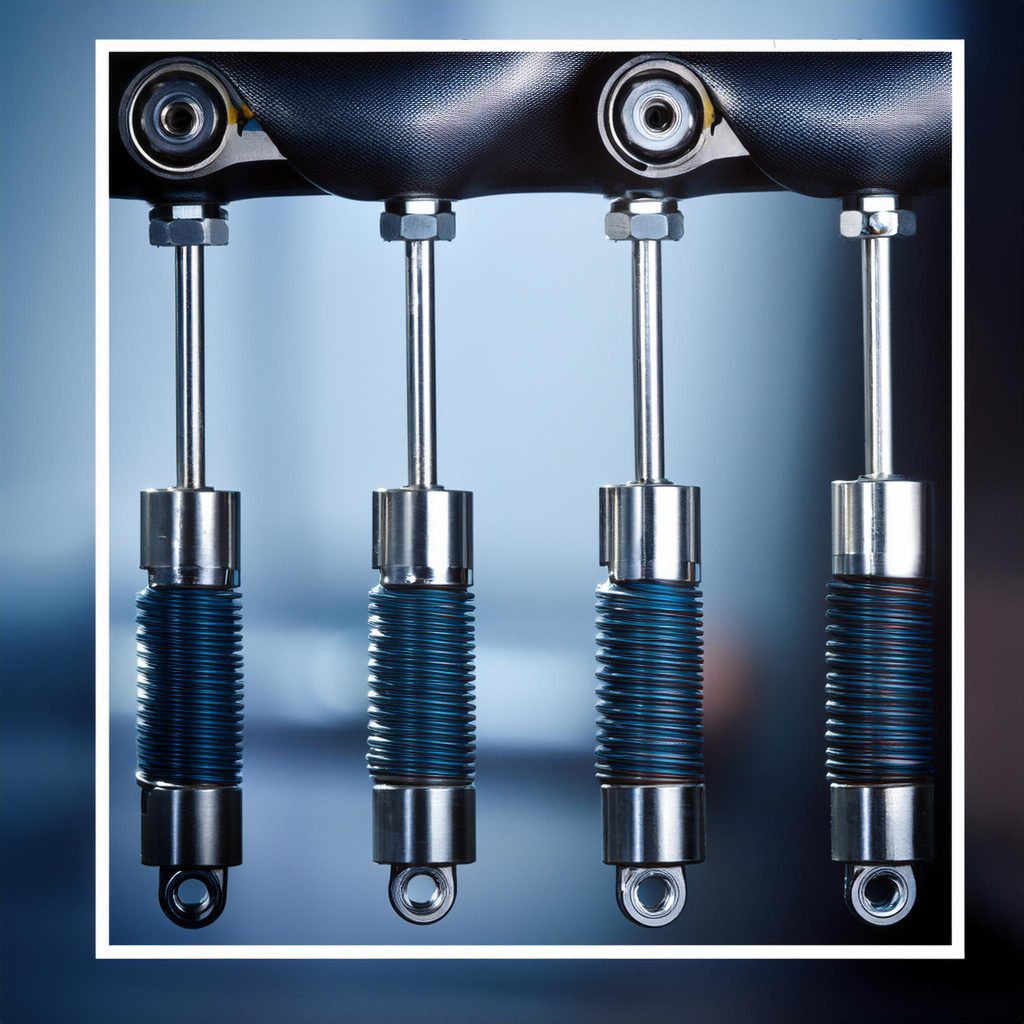
As part of a vehicle’s suspension system, a shock absorber enhances driving comfort and control by dampening impacts from the road surface. The working principle of a shock absorber is primarily based on hydraulic resistance. Here’s a breakdown of the technical working principle of a shock absorber:
1.Structure:
- Outer Body (Cylinder): This forms the main body of the shock absorber, housing the piston and oil.
- Piston: A component that moves up and down inside the inner cylinder.
- Valves: Mechanisms with holes that control the flow of fluid through the piston.
- Oil (Hydraulic Fluid): A fluid within the cylinder that gets compressed as the piston moves.
- Piston Rod: A metal rod that transmits the piston’s movement to the outside.
2.Working Principle:
- Compression Phase: When the wheel hits a bump, the shock absorber compresses, and the piston rod moves inward. During this movement, the piston moves upward inside the cylinder, pushing the oil beneath it through the valves in the piston to the upper part of the cylinder. This flow creates resistance to absorb the impact energy.
- Rebound Phase: As the wheel moves down from the bump, the shock absorber extends, and the piston rod moves outward. This time, as the piston moves downward, the oil above it flows through different valves in the piston to the lower part of the cylinder. Similarly, this creates resistance, preventing the wheel from bouncing back too quickly, thereby improving the vehicle’s road holding.
3.Damping:
- The flow of oil controlled by the valves allows the shock absorber to regulate and dampen the movement of the wheels. This damping effect ensures that the vehicle feels smoother over road undulations and supports the efficient operation of the suspension system.
4.Heat Transfer:
- As the shock absorber absorbs impact energy, it converts this energy into heat. The shock absorber body dissipates this heat into the surrounding environment, preventing the system from overheating.
In summary, the shock absorber controls the movement of the springs in the vehicle’s suspension system, ensuring balanced road holding and providing a comfortable driving experience.
Types of Shock Absorbers:
Shock absorbers are diversified according to different vehicle types and usage conditions. Here are some commonly used types of shock absorbers:
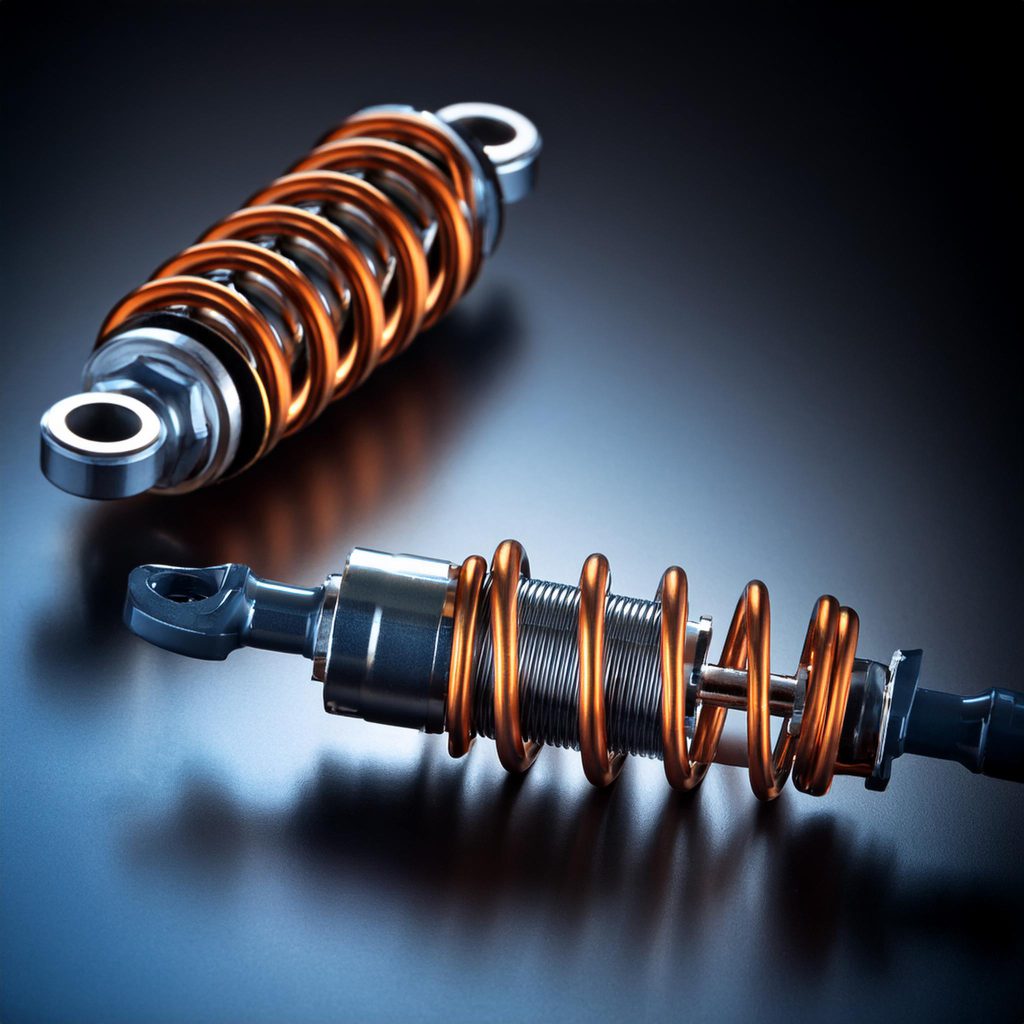
- Structure: It consists of a single cylinder that contains both hydraulic fluid and gas (usually nitrogen). The piston moves up and down within this cylinder.
- Features:
- Provides better heat dissipation due to a large surface area.
- Typically preferred in performance-oriented vehicles.
- Less susceptible to external environmental conditions.
2.Twin-Tube Shock Absorber:
- Structure: Contains two cylindrical tubes; the inner tube is where the piston moves, and the outer tube holds excess hydraulic fluid. As the piston moves within the inner tube, fluid flows through valves into the outer tube.
- Features:
- More commonly used, especially in passenger vehicles.
- Lower manufacturing cost.
- Suitable for vehicles operating at low speeds.
- Slightly more susceptible to overheating.
3.Gas-Pressurized Shock Absorber:
- Structure: Can be either twin-tube or mono-tube, but these types of shock absorbers are pressurized with gas (usually nitrogen).
- Features:
- Prevents the mixing of oil and gas, which avoids “foaming” and provides more stable performance.
- Offers better road handling and comfort.
- Ideal for frequently changing road conditions.
4.Adjustable Shock Absorber:
- Structure: Allows the driver to manually or electronically adjust the stiffness of the shock absorber.
- Features:
- Can be adapted to different driving conditions.
- Typically used in high-performance or modified vehicles.
- Can be either mono-tube or twin-tube.
5.Air Shock Absorber:
- Structure: These shock absorbers use pressurized air instead of hydraulic fluid and are often combined with air springs.
- Features:
- Provides high comfort.
- Allows for the adjustment of vehicle height.
- Commonly used in heavy-duty vehicles and SUVs.
6.Electronically Controlled Shock Absorber:
- Structure: The stiffness and damping force of the shock absorber are electronically controlled and adjusted in real-time.
- Features:
- Responds instantly to driving conditions.
- Typically found in luxury and sports cars.
- Continuously provides optimal driving comfort and performance.
7.Magnetic Ride Shock Absorber:
- Structure: Uses a special fluid containing magnetic particles. The viscosity of the fluid changes according to the intensity of the magnetic field.
- Features:
- Can make instant adjustments with a rapid response time.
- Found in advanced suspension systems, especially in high-performance vehicles.
- High cost but offers superior comfort and performance.
These types of shock absorbers are chosen according to the vehicle’s purpose, driving conditions, and performance expectations.
Functions of Shock Absorbers
Shock absorbers perform several important functions in various applications:
- Compression and Rebound Damping: The primary role of a shock absorber is to effectively absorb and dampen the compression and rebound movements of the springs and suspension.
- Spring Movement Control: Shock absorbers play a crucial role in regulating and controlling unwanted and excessive spring movements.
- Tire Contact: They ensure continuous contact between the tires and the road surface, increasing stability and traction.
- Safety and Braking Response: Another vital function of shock absorbers is to ensure the safe control and quick response of the vehicle during braking maneuvers.
- Prolonging the Lifespan of Vehicle Parts: Shock absorbers reduce wear and tear on the suspension system and other vehicle parts, thereby extending their lifespan. This also reduces vehicle maintenance costs.
Symptoms of a Bad or Faulty Shock Absorber
Signs or symptoms that a shock absorber in a vehicle is failing or faulty include:
- Excessive shaking and bouncing during driving
- Swerving or front-end dipping during braking
- Delayed braking response
- Uneven tire wear patterns
- Fluid leakage from the shock absorbers
- Cracked bushing at the mounting point
- Uneven vehicle height
- Difficulty in steering control
Advantages of Shock Absorbers
The advantages of shock absorbers include:
- Available in various forms, offering different levels of durability and stiffness while also maintaining exceptional elasticity.
- Absorbs road irregularities and impacts, providing a smoother and more comfortable ride for the driver and passengers inside the vehicle. Thus, ride comfort is maintained even on rough roads.
- Shock absorbers show significant deformation when exposed to tension, compression, shear, or varying forces.
- Despite the relatively low natural frequency of the vibration isolation system, it provides superior damping capability.
- Easy to maintain, with no slipping issues.
- Excellent in shock absorption performance.
- Easy to assemble and disassemble.
- Shock absorbers improve the vehicle’s road handling and maneuverability by ensuring optimal tire contact with the road.
Disadvantages of Shock Absorbers
While shock absorbers offer significant advantages in automobiles, they also have some limitations:
- Shock absorbers have reduced capacity to withstand environmental pollution and temperature changes.
- High-quality shock absorbers are often expensive, which can increase the overall cost of vehicle maintenance.
- Their service life is relatively short.
- Shock absorbers may struggle to achieve a natural frequency below 5Hz.
- Some types cannot be repaired and must be replaced entirely when damaged.
- Shock absorbers can add to the overall weight of the vehicle, which may be undesirable, especially in performance-oriented vehicles.
Applications of Shock Absorbers
Shock absorbers have various applications, including:
- Automotive industry for passenger cars, trucks, and motorcycles.
- Railway systems for passenger and freight trains.
- Aviation for aircraft landing gear.
- Reducing vibrations and shocks in industrial machinery.
- Construction equipment such as excavators and bulldozers.
- Off-road vehicles like ATVs and dirt bikes.
- Reducing motion and vibration in marine vessels.
- Suspension systems in bicycles.
- Sports equipment for damping shocks in mountain bikes and motocross.
Importance of Shock Absorbers

